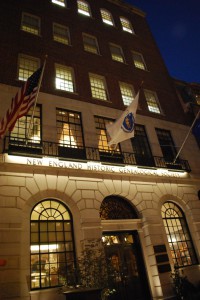 Genealogy, like the study of history in general, aims not only to identify the names of a particular individual’s ancestors, but also to reconstruct the details of that ancestor’s life. Driven by natural curiosity and a desire to connect with those of the past, genealogists and family history researchers strive—as best as they can—to understand who a person was and what he or she did. To accomplish this, a number of sources are typically consulted, including obituaries, biographical reviews, town histories, family letters, and (un)published genealogies. Another important method for obtaining information on the lives of our ancestors—and perhaps the most enjoyable one—is interviewing or asking family members about their family history. Continue reading Making time to talk
Genealogy, like the study of history in general, aims not only to identify the names of a particular individual’s ancestors, but also to reconstruct the details of that ancestor’s life. Driven by natural curiosity and a desire to connect with those of the past, genealogists and family history researchers strive—as best as they can—to understand who a person was and what he or she did. To accomplish this, a number of sources are typically consulted, including obituaries, biographical reviews, town histories, family letters, and (un)published genealogies. Another important method for obtaining information on the lives of our ancestors—and perhaps the most enjoyable one—is interviewing or asking family members about their family history. Continue reading Making time to talk
Category Archives: Research Methods
Research in organizational records
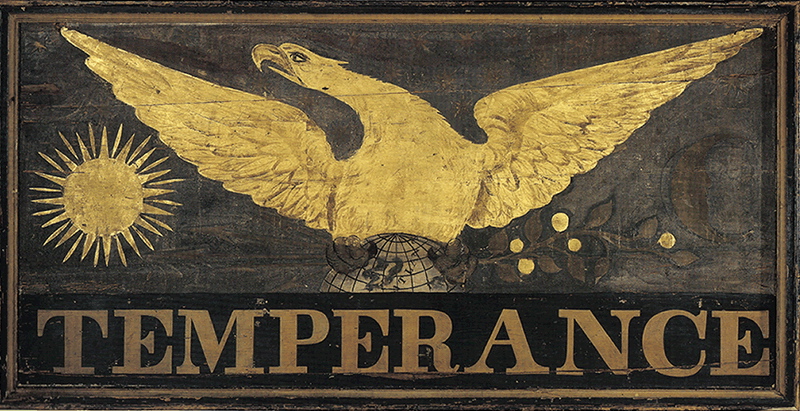 One of my recent research cases involved searching for information within societies and organizations. It began with searching in newspapers for an 1849 obituary in order to gather more biographical information about my research subject, but I also looked for any references to him in articles and classifieds ads. I first located his death notice, and learned that he was a printer – a compositor of the Boston Transcript. Continue reading Research in organizational records
One of my recent research cases involved searching for information within societies and organizations. It began with searching in newspapers for an 1849 obituary in order to gather more biographical information about my research subject, but I also looked for any references to him in articles and classifieds ads. I first located his death notice, and learned that he was a printer – a compositor of the Boston Transcript. Continue reading Research in organizational records
Deeds: Part Three
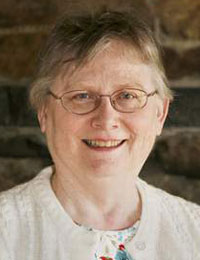 Following up on my previous post, Jerry Anderson reminds me that some colonies did not require a wife to sign a deed releasing her dower rights. This just emphasizes the complexity of the subject of land records and the fact that you will need to learn all the ins and outs that apply to the records you are searching – not exciting stuff, but necessary. I am not up to speed on current genealogy how-to publications, so perhaps readers can chime in here. The old classic I used was Val D. Greenwood’s The Researcher’s Guide to American Genealogy. I just looked it up online and it is still available – a copy in “acceptable” condition can be bought for $1.99 at www.barnesandnoble.com! If you happen to find a copy in your library, check it out. Of course, it will be out of date regarding technology, but basic research information never changes. Continue reading Deeds: Part Three
Following up on my previous post, Jerry Anderson reminds me that some colonies did not require a wife to sign a deed releasing her dower rights. This just emphasizes the complexity of the subject of land records and the fact that you will need to learn all the ins and outs that apply to the records you are searching – not exciting stuff, but necessary. I am not up to speed on current genealogy how-to publications, so perhaps readers can chime in here. The old classic I used was Val D. Greenwood’s The Researcher’s Guide to American Genealogy. I just looked it up online and it is still available – a copy in “acceptable” condition can be bought for $1.99 at www.barnesandnoble.com! If you happen to find a copy in your library, check it out. Of course, it will be out of date regarding technology, but basic research information never changes. Continue reading Deeds: Part Three
Poor relief records
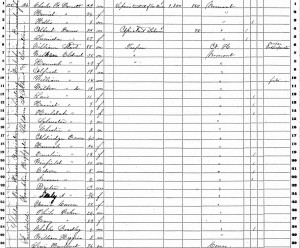
Vita Brevis readers are likely all too familiar with the problem of brick walls in genealogical research. Many are aware of the uses of probate and estate records, but what if your ancestors are not to be found in the probate records of the area where they died? There can be any number of reasons, for economic conditions in the colonial and early Federal period were often unstable, and a family could find itself experiencing periods of both comfort and destitution at one point or another. Fortunately, there are a number of techniques to track less wealthy ancestors, both in the interest of making family connections and learning something of the reality of their lives. Continue reading Poor relief records
Saturday’s Fireside Chat
 On Saturday I had the honor and fun of joining with Bob Anderson and Chris Child in a Fireside Chat in the Treat Rotunda at NEHGS. We were each touting publications for sale – Bob’s Great Migration Directory (so popular it has sold out and there were none to physically sell that day!); Chris Child’s first issue of Mayflower Descendant under the new banner of NEHGS, which will be available in January; and Volume 1 of my Early New England Families series. The “Chats,” which took place in three sessions throughout the day, included interesting questions from our moderators, Jim Power and Penny Stratton, and from the audience about our projects, how we all got started in genealogy, and how we work. There were at least 150 people who came for the special day of discount prices in the bookstore, access to the library, and to hear stories from two old genealogists (Bob and I), many of which predated Chris’ birth. I think everyone enjoyed the event. Continue reading Saturday’s Fireside Chat
On Saturday I had the honor and fun of joining with Bob Anderson and Chris Child in a Fireside Chat in the Treat Rotunda at NEHGS. We were each touting publications for sale – Bob’s Great Migration Directory (so popular it has sold out and there were none to physically sell that day!); Chris Child’s first issue of Mayflower Descendant under the new banner of NEHGS, which will be available in January; and Volume 1 of my Early New England Families series. The “Chats,” which took place in three sessions throughout the day, included interesting questions from our moderators, Jim Power and Penny Stratton, and from the audience about our projects, how we all got started in genealogy, and how we work. There were at least 150 people who came for the special day of discount prices in the bookstore, access to the library, and to hear stories from two old genealogists (Bob and I), many of which predated Chris’ birth. I think everyone enjoyed the event. Continue reading Saturday’s Fireside Chat
Keeping it in the family
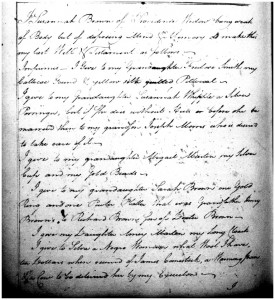
Recently, I had a client who wanted to know more about a silver teapot designed by the Hurd silversmiths of Boston that had been passed down through his family. The teapot had the name “Sally Brown” engraved on it, but to his knowledge, he did not have any Brown relatives, which made the teapot a bit of a mystery.
With some research, we found a connection to the Brown family through ancestor Amey Martin (1784–1852), the wife of Samuel Nightingale Richmond; her parents were Silvanus Martin (1748–1819) and Amey Brown (1749–1833) of Providence, Rhode Island. Though I located a connection to a Brown family, my client’s direct ancestry did not contain anyone named Sarah or Sally Brown. Continue reading Keeping it in the family
Deeds: Part Two
 Continuing with the parts of a deed from my last post:
Continuing with the parts of a deed from my last post:
Warranty: “…to warrant & forever confirm the same unto him the said Josiah Lichfield his heirs & assigns from & against all the lawful claims and demands of all persons whatsoever.” (Types of deeds will be discussed in Part 3.)
Date deed was executed (signed by the grantor): “…hereunto Set my Hand & Seal this sixteenth day of April anno domini One thousand Seven hundred & fifty nine and in the thirty second year of the reign of our sovereign Lord George the Second by the Grace of God King and so forth.” The date could also be written in numerals, but not usually in numerals only. This is the same as when you write a check and spell out the amount on one line and write the numbers on another one. The intent here being that there should be no misunderstanding about the date. Continue reading Deeds: Part Two
Maps of Maritime Canada
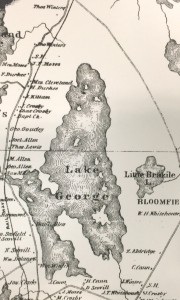
Tracing the origins of Canadian ancestors can be difficult, and the lack of early vital records can prove frustrating. Often, we have to turn to other sources to help piece together family histories. One of the “other sources” that I love to use are maps. Maps not only provide us with the locations of our ancestors’ homes or farms, they can also provide us with significant clues. Here are just a few sources that I have come across that I hope will aid you in your Canadian research.
Nova Scotia
Crown Land Grant Maps
The Crown Land Information Management Centre at the Nova Scotia Department of Natural Resources maintains Index Sheet Maps of Nova Scotia Crown Land Grant maps. If you know the general vicinity of where your ancestor settled, then the Index Sheet Maps will prove useful. Continue reading Maps of Maritime Canada
Consider the siblings
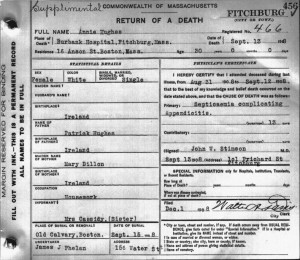 For the last several months, I have been trying to determine the origins of each of my mother’s Irish ancestors. In a previous post, I mentioned my success in locating the origins of my Kenefick ancestors; however, I have been having trouble with some ancestors with much more common surnames.
For the last several months, I have been trying to determine the origins of each of my mother’s Irish ancestors. In a previous post, I mentioned my success in locating the origins of my Kenefick ancestors; however, I have been having trouble with some ancestors with much more common surnames.
The earliest record I have for my maternal great-great-grandparents Patrick Cassidy and Mary Hughes is their marriage record, dated in Boston 28 November 1888. Continue reading Consider the siblings
News of the Mayflower Descendant
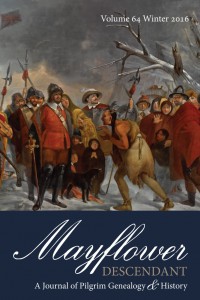 When the season turns to Thanksgiving, we often think of the first Pilgrims arriving on these shores aboard the Mayflower. And lately at NEHGS, when we think about the Mayflower, we think specifically of the Mayflower Descendant, of which NEHGS will be the steward for the next ten years. Christopher C. Child, Senior Genealogist of the Newbury Street Press at NEHGS, is the new editor, and busily at work on the first issue, due to mail to subscribers in January 2016. The first Descendant was published in 1899 by George Ernest Bowman, under the auspices of the Massachusetts Society of Mayflower Descendants, which continued to publish it until recently. Continue reading News of the Mayflower Descendant
When the season turns to Thanksgiving, we often think of the first Pilgrims arriving on these shores aboard the Mayflower. And lately at NEHGS, when we think about the Mayflower, we think specifically of the Mayflower Descendant, of which NEHGS will be the steward for the next ten years. Christopher C. Child, Senior Genealogist of the Newbury Street Press at NEHGS, is the new editor, and busily at work on the first issue, due to mail to subscribers in January 2016. The first Descendant was published in 1899 by George Ernest Bowman, under the auspices of the Massachusetts Society of Mayflower Descendants, which continued to publish it until recently. Continue reading News of the Mayflower Descendant